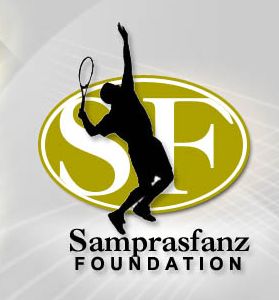Samprasfanz » Archives 2003 to 2011 » Federer at Wimbledon: No Sampras
Federer at Wimbledon: No Sampras
Tuesday, July 12, 2005 by Baird Hull
For the third consecutive year, Roger Federer won Wimbledon. This has brought to bear the inevitable discussions of Federer’s greatness and his place in history.
Announcers have claimed that Federer possesses the complete game and that he could be the greatest talent ever to have played. The Swiss sensation is only 23, and has won five majors, which puts him on par to possibly reach Pete Sampras’ record of 14 slam titles. At Wimbledon this year, Federer was never seriously challenged and beat Andy Roddick with apparent ease. Federer is the only player since Sampras to enter Wimbledon each year as the overwhelming favorite.
Despite Federer’s record at Wimbledon and the other slams, his accomplishments are less impressive when one looks at the lack of diversity in the men’s game today. Namely, the tour lacks serve and volleyers, who are especially dangerous on the grass at Wimbledon. At this year’s Wimbledon, the three semifinalists other than Roger Federer were Lleyton Hewitt, Andy Roddick and Thomas Johansson. All three of these players are basically baseliners. Lleyton Hewitt is essentially a grinder — he wins matches by running from side to side at the baseline. Andy Roddick, despite his powerful serve, also resides at the baseline, trying to mask a backhand which is shaky at its best. Thomas Johansson is pretty much the standard male baseliner of the 1990s who had a hot
tournament.
None of these men possess the talent to have made it to the second week of Wimbledon during earlier generations. If one looks at the recent list of champions, one will find that John McEnroe, Boris Becker and Pete Sampras clearly dominated the event over the past 25 years. All three of these champions possessed great all-around games and were capable of dominating at the net. Other players with notable Wimbledon careers were Goran Ivanesevic and Patrick Rafter. Ivanesevic was an all-around player with a great serve, while Rafter was an all-around player with a great volley.
There is great evidence that these players were far greater grass court players than the players that are dominating Wimbledon these days.
To begin with, Thomas Johansson, Wimbledon semifinalist, has been playing grand slams since 1994. In all of his years, he was never able to make it past the fourth round. In his younger, fresher days he was always stopped short of truly making it deep into the tournament by better players. Also, Roger Federer, who had already been picked as the next potential great, lost to Tim Henman in 2001 in the middle of a run which put him as the favorite to win Wimbledon that year. This alone is clear evidence that Roger Federer would not have been able to dominate in years past.
The best way, however, to judge the competitiveness of today’s grass court players versus the competitiveness of grass court players in years past is by a stroke by stroke analysis. Andy Roddick, who has indisputably been the second-best grass court player over the last three years, essentially possesses two strokes: the serve and the forehand. On both shots he possesses mind-numbing power. Unfortunately, he has neither a backhand nor a volley to provide a strong supporting cast. Even on his serve, his most feared weapon, he clearly lags behind players in the past. Although he can hit a 150 mph rocket, he has never put up the numbers that Sampras and Ivanesevic were able to do with 125 mph serves.
Even Federer himself is not a strong matchup against players of the past. Federer is often praised as an all-court player who is great at every shot. Federer does possess a good serve, which has gotten better over the last few years, a good volley, a good backhand, and a great forehand. However, he does not possess nearly as good a serve as Ivanesevic, who won Wimbledon only once, nor does he possess nearly as good a volley as Rafter, who never won Wimbledon. In addition, he falls behind Sampras in nearly every category. Sampras indisputably possessed a better serve, a better volley and a better half volley. Federer is probably a better overall groundstroker, being that he has a better backhand, but his forehand is not as punishing a stroke as was Sampras’.
What does all of this mean? Roger Federer is an extremely talented player, but his dominance at the All England Lawn and Tennis Club has come at a time when the competition is far less tough. Federer has emerged as the king of a new breed of baseliners who cannot take advantage of the grass as in days past.
Filed under: Archives 2003 to 2011










